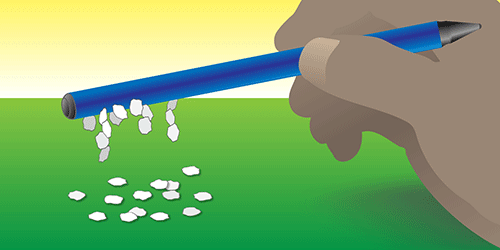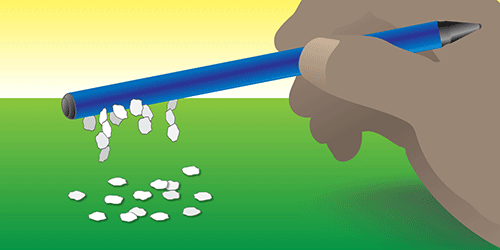Static Electricity Needs Water
Attracting paper scraps with a pen that has been rubbed against cloth is a classic physics demo. But the source of this effect—a build-up of charge known as triboelectrification—doesn’t strictly require rubbing materials together. It can occur when two insulating surfaces are simply brought into contact and then separated, although the exact mechanism is mysterious. Now, with an experiment that isolates this nonfrictional type of charging, Isaac Harris and colleagues, at the University of Chicago, attribute the effect to miniscule amounts of ion-carrying water that are transferred from one surface to the other. The result could help researchers improve industrial processes where contact charging is a problem or avoid dangerous electrostatic discharges.
The team repeatedly pressed together postage-stamp-sized pieces of nylon and polytetrafluoroethylene (PTFE)—better known as Teflon—and measured the charge on the pieces after pulling them apart. Near room temperature, each of the first few contacts brought an exponential buildup of negative charge on the PTFE, after which the charge increased linearly. Repeating the experiment at produced the same pattern, but the trend turned linear after fewer repetitions. The team put the difference down to there being less water on the nylon surface after heating, which they confirmed by weighing the nylon at different temperatures.
Knowing that water plays a part, Harris and colleagues conclude that contact charging will occur when one material is more attractive to water (hydrophilic) than the other. On contact, this condition allows hydroxide ions to pass from wet patches on one surface to dryer spots on the other surface. The researchers further argue that the charge buildup changes from exponential to linear as the water is redistributed.
This research is published in Physical Review Materials.
–Marric Stephens
Marric Stephens is a freelance science writer based in Bristol, UK.





